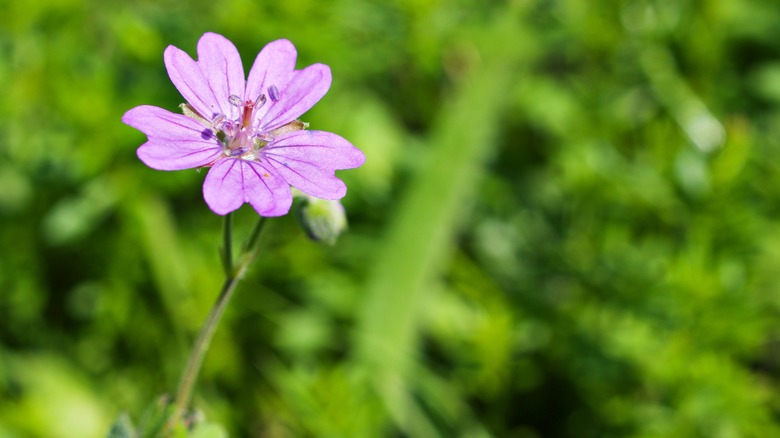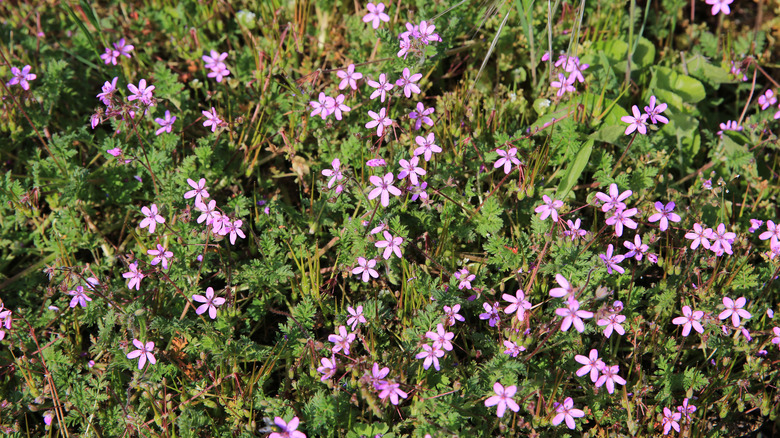The Broadleaf Weed You'll Want To Consider Getting Rid Of Before It Takes Over
The cutleaf geranium (Geranium dissectum) is a deceptive little invader. This innocent-looking wildflower is a broadleaf weed and is originally native to Europe and Asia, but the cutleaf geranium has now made itself at home in regions like the Pacific Northwest and California, flourishing in disturbed soils and edging out native plants in gardens, parks, and wild areas. When left unchecked, the plant, also known as the cut-leaved cranesbill, creates dense mats that block sunlight and nutrients from reaching native plants, threatening biodiversity. Interestingly, even agricultural crops can fall victim to this aggressive invader, posing a for biodiversity problem within the ecosystem. Broadleaf weeds are dicots—having two leaves compared to monocotyledonous grassy weeds— and are particularly trying to get rid of it.
Its clever propagation strategy makes the cutleaf geranium difficult to get rid of. Each plant produces hundreds of seeds, which it launches explosively to maximize their spread. Yes, this plant seeks to gain as much ground as quickly as it can. And it's pretty patient, too. In fact, these seeds remain viable for up to 10 years, biding their time until conditions are perfect for germination. But first things first, how can you spot one in your garden?
How to remove cutleaf geranium for good
Some weeds should be removed from your yard right away unless you want them to take over, and the cutleaf geranium is one of them. Identifying this plant early is crucial so you can swiftly take action. With its signature deeply dissected leaves giving it a feathery look, it blooms in delicate clusters of small, five-petaled flowers from spring to summer.
Getting rid of cutleaf geraniums takes diligence, but is worth the effort. The easiest way to start the process is by removing young plants manually, ensuring you pull up the entire root system to prevent regrowth. If the weed has taken over your garden and manual labor won't cut it, a combination of hand-pulling, hoeing, mulching and herbicide works best. An effective way to get rid of weeds in your garden is to use a pre-emergent herbicide in early spring to stop seeds from germinating and cover bare soil with mulch to smother any seedlings. Alternatively, place a plastic sheet over the weed on a hot day. The plastic will smother the plants (through a process called solarization) and they will die. Other methods include planting competitive plants or trying our top tips for spraying a vinegar-based weed killer safely.
Be careful while removing cutleaf geranium as their seeds can survive and spread if given the opportunity. Instead of throwing them into your compost heap, bag them, or place them in a bucket, and send them to a green waste facility.

